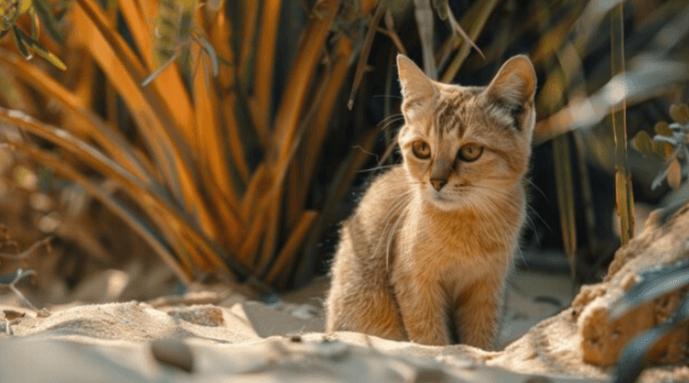Cute:8ht4wtxoogy= Sand Cat

Cute:8ht4wtxoogy= Sand Cat, often overlooked due to its remote habitat, presents a fascinating study in adaptation and survival. With its unique physical features suited for life in the harsh desert, this elusive feline exhibits behaviors that reflect both its solitary nature and occasional social interactions. As we explore the intricacies of its lifestyle and the pressing conservation challenges it faces, one cannot help but wonder how these factors intertwine to shape the future of this captivating species. What implications might these dynamics hold for its continued existence in an ever-changing environment?
Sand Cat Habitat
The sand cat (Felis margarita) primarily inhabits arid desert environments, exhibiting a remarkable adaptability to some of the harshest conditions on Earth.
Its range extends across North Africa, the Middle East, and parts of Central Asia, where it thrives within diverse desert ecosystems.
This feline’s ability to navigate shifting sands and extreme temperatures showcases the intricate balance of life within these challenging habitats.
Unique Physical Features
Boasting a distinctive appearance, the sand cat (Felis margarita) is equipped with several unique physical features that enhance its survival in arid environments.
Its broad, padded paws act as natural snowshoes, allowing for efficient movement across sandy terrain. Additionally, its large ears provide acute hearing, crucial for detecting prey.
These feline adaptations exemplify the sand cat’s remarkable capabilities for desert survival.
Behavior and Social Structure
Adaptations such as broad, padded paws and large ears not only aid the sand cat in navigating its harsh desert environment but also influence its behavior and social dynamics.
These cats engage in playful interactions, fostering social bonds, while their hunting techniques demonstrate remarkable agility and stealth.
Typically solitary, sand cats exhibit behaviors that reflect both independence and the occasional need for social engagement.
Read Also Cute:7ziqkivryto= Mushrooms
Conservation Status and Efforts
In the face of increasing environmental challenges, the conservation status of sand cats has become a pressing concern.
Habitat threats, such as urbanization and climate change, jeopardize their survival. Conservation programs aimed at habitat protection and public awareness are crucial.
Collaborative efforts among local communities, wildlife organizations, and governments can help ensure that these elusive creatures continue to roam their natural landscapes freely.
Conclusion
In summary, the Cute:8ht4wtxoogy= Sand Cat exemplifies the resilience of wildlife in harsh desert ecosystems. With an estimated range of over 1.5 million square kilometers across North Africa and parts of Asia, this remarkable species faces significant threats due to habitat loss and human encroachment. Conservation efforts are vital, as the population remains fragmented and declining. Protecting the sand cat’s habitat is essential not only for its survival but also for maintaining the ecological balance of desert environments.





